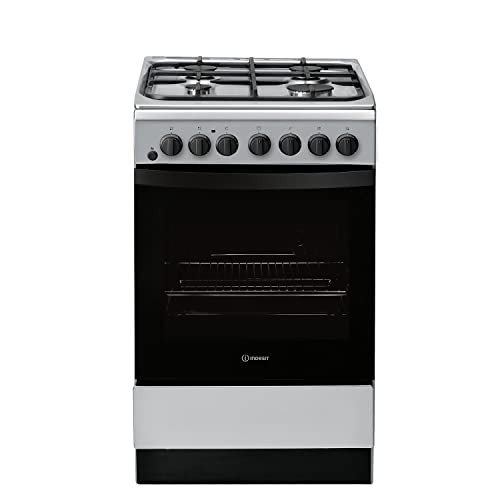Why Ovens And Hobs Is More Difficult Than You Think

Understanding Ovens and Hobs: A Comprehensive Guide
Cooking has come a long way because the days of open flames and basic cooking approaches. Today, ovens and hobs are at the heart of contemporary kitchen areas, offering adaptability, performance, and a variety of cooking options. Whether Ovens With Hobs are an amateur cook or a seasoned chef, understanding the distinctions, functions, and functions of these home appliances is crucial for making the most of cooking capacity. This article breaks down the numerous kinds of ovens and hobs available on the marketplace, their functionalities, and how to choose the best appliances for your kitchen.
What is an Oven?
An oven is an enclosed area developed for heating and cooking food, using numerous methods such as baking, roasting, and broiling. Ovens are available in numerous types, each serving unique cooking preferences and requirements.
Types of Ovens
Traditional Ovens:
- Use gas or electrical power for heating.
- Normally include a heating element at the top and bottom.
- Ideal for standard baking jobs.
Convection Ovens:
- Use a fan to flow hot air, promoting even cooking.
- Appropriate for baking, roasting, and reheating.
- Reduces cooking time and enhances taste.
Steam Ovens:
- Utilize steam to prepare food while maintaining wetness and nutrients.
- Excellent for health-conscious cooking, such as vegetables and fish.
Microwave Ovens:
- Use electromagnetic radiation to heat food rapidly.
- Best for reheating leftovers or cooking easy meals.
Wall Ovens:
- Built into the wall, conserving space in the kitchen.
- Available in different setups, consisting of single or double ovens.
Key Features of Ovens
- Temperature Control: Precision heating for various baking and preparing processes.
- Self-Cleaning Options: Some designs have self-cleaning modes that utilize high temperature levels to burn off food residue.
- Smart Features: Wi-Fi connectivity allows remote pre-heating, monitoring, and recipe management by means of smart devices.
What is a Hob?
A hob is a cooking surface, frequently described as a stove or cooktop, where cookware is put for heating. Hobs are offered in different materials, sizes, and heating methods, catering to diverse cooking needs.
Kinds of Hobs
Gas Hobs:
- Utilize burner for direct flame cooking.
- Deal accurate temperature level control and are preferred by lots of professional chefs.
Electric Hobs:
- Use electric coils or smooth tops.
- Some designs are geared up with induction technology, providing fast heating through electro-magnetic energy.
Induction Hobs:
- Cookware must be made from magnetic materials.
- Really energy-efficient, supplying quick heat and decreasing burn risks.
Ceramic Hobs:
- Feature a glass-ceramic surface area with heating components below.
- Easy to tidy but can be less energy-efficient than induction hobs.
Secret Features of Hobs
- Burner Configuration: Varies from 2 to six burners, depending upon design and size.
- Power Levels: Multiple settings enable for higher precision in cooking.
- Security Features: Options like flame failure gadgets and child lock settings guarantee safety throughout cooking.
Choosing the Right Oven and Hob
Choosing the best oven and hob for your kitchen involves careful consideration of various factors. Below is a list of concerns to guide your selection process:
- What is your main cooking style?
- Just how much kitchen space do you have?
- What is your budget plan?
- Do you choose gas or electric appliances?
- Are extra features like clever connection essential to you?
Table Summary of Key Differences Between Ovens and Hobs
| Feature | Oven | Hob |
|---|---|---|
| Functions | Baking, roasting, broiling | Boiling, frying, sautéing |
| Cooking Method | Enclosed heat | Direct cooking surface area |
| Temperature level Control | Adjustable settings | Stove settings |
| Types | Electric, gas, convection, microwave | Gas, electric, induction, ceramic |
| Cooking Capacity | Larger (can prepare numerous meals) | Smaller (concentrate on instant cooking) |
| Cleaning | Self-cleaning alternatives readily available | Generally manual cleaning needed |
Upkeep Tips for Ovens and Hobs
Proper care and maintenance of your cooking home appliances extend their life expectancy and effectiveness. Here are essential upkeep pointers:
Regular Cleaning:
- Clean the oven interior after each use to prevent residue buildup.
- Clean down hob surface areas after cooking to avoid discolorations.
Inspect Seals:
- Ensure the oven door seals are undamaged to preserve energy effectiveness.
- Replace damaged gaskets and seals as required.
Check Burners and Elements:
- For gas hobs, check for clogs in burners.
- For electric hobs, inspect coils and surfaces for signs of wear.
FAQs
Can I use any cookware on induction hobs?
- No, induction hobs only deal with magnetic pots and pans, such as cast iron or stainless steel.
What is the most energy-efficient cooking home appliance?
- Induction hobs are normally the most energy-efficient alternative, utilizing less energy than conventional gas or electric designs.
How typically should I clean my oven?
- It's suggested to clean your oven every few months, or more regularly if you utilize it typically.
Can I install an oven and hob separately?
- Yes, both appliances can be installed independently based upon kitchen design and area.
What should I consider when setting up a gas hob?
- Guarantee correct ventilation and comply with regional security codes. It is recommended to have an expert install gas appliances.
Understanding the features, types, and upkeep of ovens and hobs can significantly enhance your cooking experiences. Selecting the best home appliances customized to your cooking design, kitchen space, and safety requirements can make all the distinction in accomplishing cooking success. By being notified about your options, you can enjoy a more effective and enjoyable cooking journey, bringing delicious meals to your table with ease.

